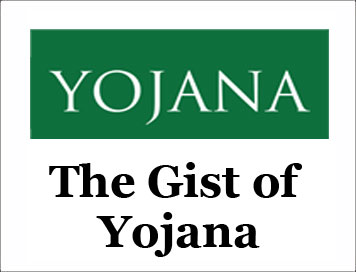(HOT) UPSC Current Affairs 2025 PDF
NEW! The Gist (NOV-2025) | E-BOOKS
Asian Ministerial Conference on Disaster Risk Reduciton 2016 - March - 2017

(GIST OF YOJANA) Asian Ministerial Conference on Disaster Risk Reduciton 2016 - March - 2017
The Asian Ministerial Conference for Disaster Risk Reduction was held
recently in New Delhi with the aim of providing a platform to member countries
for sharing best practices in the field of Disaster Risk Reduction. About 4000
participants from the Asian Region participated in the Conference.
This was the first Asian Ministerial Conference Reduction (AMCDRR) after the
advent of the Sendai Framework for DRR (SFDRR). The SFDRR (2015-2030) was
adopted at the Third World Conference on DRR at Sendai in Japan in March, 2015.
It identifies targets and priority action areas towards reducing disaster risk by 'reducing the damage caused by natural hazards like earthquakes, floods, droughts and cyclones, through an ethic of prevention’
Established in 2005, the AMCDRR is a biennial conference jointly organized by different Asian countries and the United Nations Office for Disaster Risk Reduction (UNISDR).
The next AMCDRR will be held in Mongolia in 2018
Two important documents - 'New Delhi Declaration' and the' Asian Regional Plan
for Implementation of the Sendai Framework' were adopted at the 3-day
Conference.
New Delhi Declaration
The 'New Delhi Declaration' is a political statement spelling out the commitment of participating governments towards preventing and reducing disaster risk, and strengthening the resilience of communities, nations in the Asian region. Recognising the need to accelerate the implementation of global frameworks, it commits to a people-centred and whole-of-society approach towards DRR. It also emphasises the need to enhance the capacity of communities and ensure participation of all stakeholder groups towards achieving resilience.
Asian Regional Plan
The 'Asian Regional Plan for Implementation of the Sendai Framework' focuses on the 'How to' reduce disaster risk at national and local levels. It has arrived at a longer term road map of cooperation and collaboration, spanning the 15-year horizon of the Sendai Framework, as well as a two-year action plan to further disaster risk reduction with specific, actionable activities:
Among the actions highlighted in support of the implementation of the Sendai Framework was a focus on developing national and local strategies, policies and plans for Disaster Resilience and implementing them, including substantially increasing investment in disaster preparedness and to promote and strengthen education on disaster risk reduction. Risk assessment, the quality and availability of data and effective risk information systems for communities were referenced as a cornerstone for community participation and resilience even for those located in exposed areas.
The Conference also commemorated the first World Tsunami Awareness Day to
spread awareness on tsunami. The observance of the day stressed on the
importance of early warning systems and preparedness of communities in order to
mitigate damage from the' often devastating natural hazard.
Inaugurating the conference, the Prime Minister had called for regional and
international cooperation in building disaster resilience. Reiterating the
government of India's commitment to the Sendai framework, the Prime Minister
outlined a ten point agenda for disaster management.
Study Material for UPSC Pre General Studies (Paper-1)
This is Only Sample Material, To Get Full Materials Buy The Gist 1 Year Subscription - "Only PDF" Click Here
Click Here to Download More Free Sample Material
Go Back To Main Page
Courtesy: Yojana

